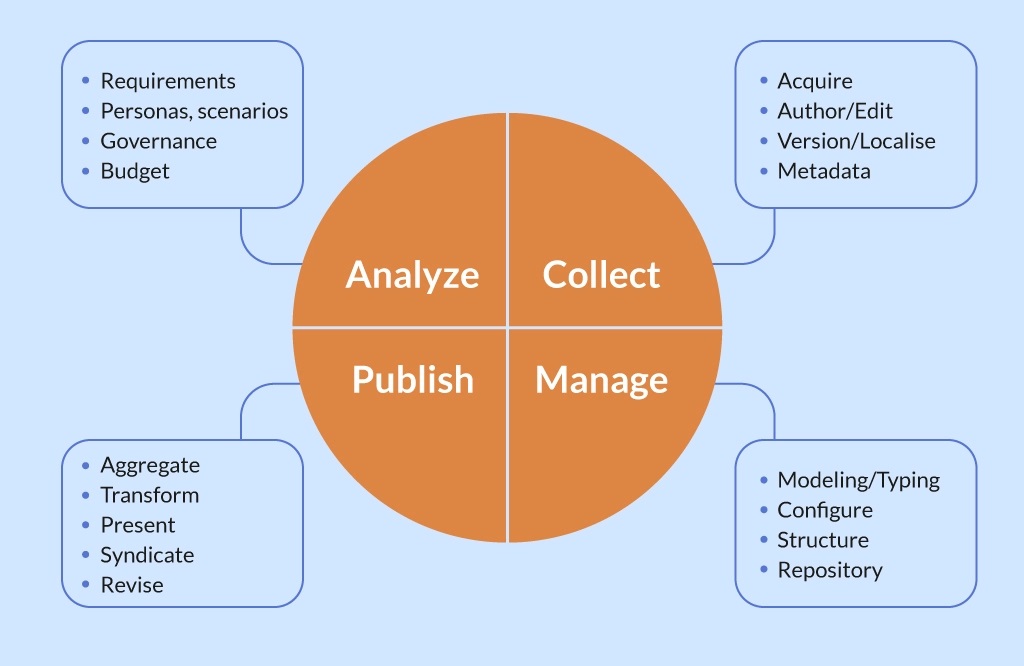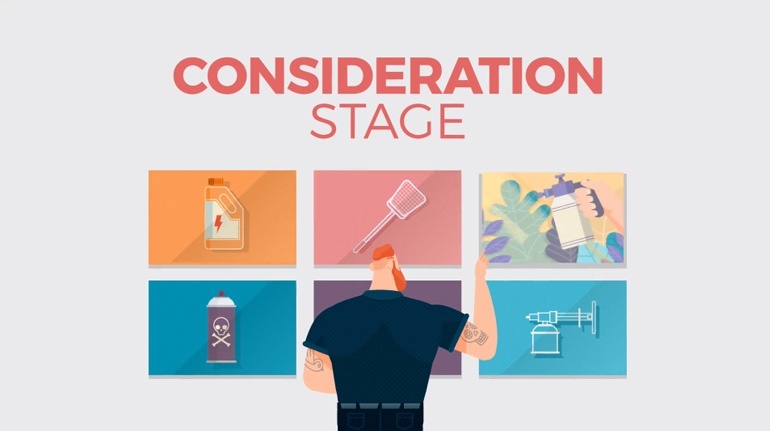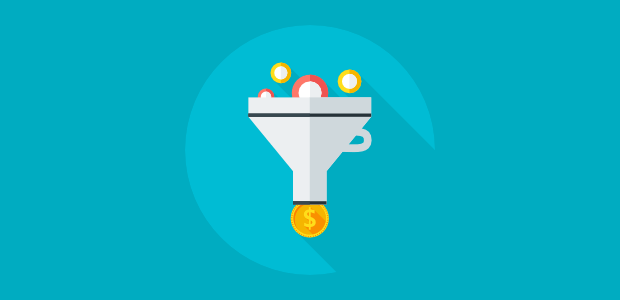Description: The concept of a sales funnel is fairly common in the marketing space. Marrying the concept of sales funnel with content marketing can be helpful for a business. We discuss the management of content strategy with a sales funnel approach.
Managing Content Strategy with Sales Funnel Approach

For many businesses, the management of a sound content strategy is important. Content nowadays determines the fate of most marketing campaigns. As a practise, no other field has gained prominence in these past few years as much as content marketing has.
To drive content marketing, a solid strategy at the back end is important. It helps give direction to all the resources a company might have to create content.
The impact of content in digital marketing, especially from an SEO standpoint, is believed to be felt in bringing people to the top layer of the funnel. In other words, content is useful for prospective customers who have to be made aware about the product.
However, a broader approach helps us see how content can play a major role in influencing customers across different stages of a funnel. Good content helps push people lower down the funnel through various different types of content until finally the prospect is ready to be converted into a customer.
As a concept, sales funnel is important. However, when combined with content marketing, it becomes absolutely crucial. In most top digital marketing institutes, a lot of emphasis is given on how content marketing plays a role in creating a more effective sales funnel.
In this article, how a content strategy should be shaped according to each stage of a sales funnel.
Do check: Ten Secrets To Create A Valueable Content For Your Website
What is a Sales Funnel?

Before delving into content strategy, let’s first understand the concept of a sales funnel.
The problem marketers face is that people who are part of their target audience don’t simply see something and buy it. There is a whole process that goes on behind the scenes to convert incoming visitors into interested prospects and finally paying customers.
This buying process is typically divided into different stages and usually compared to water going down a funnel.
Why a funnel? A funnel is broad at the top and narrow at the bottom. This is akin to the people interacting and communicating with a brand. During communications, some people opt out of the process while others keep moving down into the funnel and engage further with the brand. At the bottom of the funnel are the people most interested in doing business with the brand.
This process is divided into three stages and each of these represents the attributes of people in terms of their interest in doing business with the brand.
Do check: Three Parts of Digital Marketing Everyone Forgets
Top Layer – Awareness

In the top layer is awareness. This is the stage where people interact with the brand for the first time, mainly through content.
For example, let’s say you want to make an omelette. You search for the recipe on Google and find a blog post on the website of a local food retailer ranked #1 on the search results.
The local food retailer is not really gaining from explaining to people how an omelette is made, nothing except a lot of traffic. A lot of people will visit the retailer’s website and read the content posted.
This is the awareness stage where people arriving on the website have no idea who the local retailer is and the type of products sold on the website.
The goal for the retailer at this stage should be to just inform the incoming visitors about what they have come for. Building awareness is important as it is the start of every long term relationship.
Usually, the content best for raising awareness can refer to blogs, articles, and other website content. This content is usually informational and is toned down to not contain any promotional aspects.
The goal by the end of awareness stage is to get some kind of contact information of the interested customers. This is usually done by offering people something of value for free, such as a free e-book or a discount code in exchange for getting their email ID.
Accomplishing all this asks for the creation of a large volume of content. The volume of content needed at the awareness is far more than the content needed for any other stage. This is because actually evoking an interest amongst people requires a much greater push.
Do check: Nine Digital Marketing Challenges Marketers Currently Face
Middle Layer – Consideration

At this stage, people are already aware about the brand.
The goal now is to make interested prospects consider the possibility of actually making a purchase. Furthermore, brands must also commit to establishing a more solid relationship with their audience.
How is this achieved?
At the end of the awareness stage, marketers had already gained the contact information of the interested prospects. This opens up the possibility of email marketing.
Email marketing is a very effective technique and very good for brands following the sales funnel with strict discipline. This is because people tend to have a much wider attention span while reading their own inbox.
Thus, content created with the right triggers and titbits can push people further down the sales funnel.
The middle layer is also the place where marketers can ramp up social media efforts. Encouraging people to engage with social media accounts is a good start. The aim of the entire exercise is to introduce the products and services the brand offers and build more trust with strong email content and social media posting.
Do check: List Of Top 5 Books for Content Marketers
Bottom Layer – Conversion

The middle layer ends after a healthy level of engagement with a prospective customer and a brand has been established.
The bottom layer is the easiest part from a content strategy standpoint. With the right CTA, cool discount offers (optional), and a final push to send people to the contact or services page of a website, prospects in the final stage can be converted into becoming customers.
Content in the final stage is created solely for promotional purposes. Since trust between the prospect and the brand is highest at this point, there is no need for extravagant creation of content. Simple CTA optimization and bottom-layer content is enough to convert prospects into customers.
In Conclusion
In conclusion, this article covers how the content strategy of a campaign is shaped according to the different stages of a sales funnel.
About the Author – Gaurav Heera is a well-known content strategist and digital marketing entrepreneur. He currently heads operations at DelhiCourses.in, a place ranked #1 consistently for its digital marketing course in Delhi. The institute also offers courses in other fields such as cyber security, business analytics, and cloud computing.
